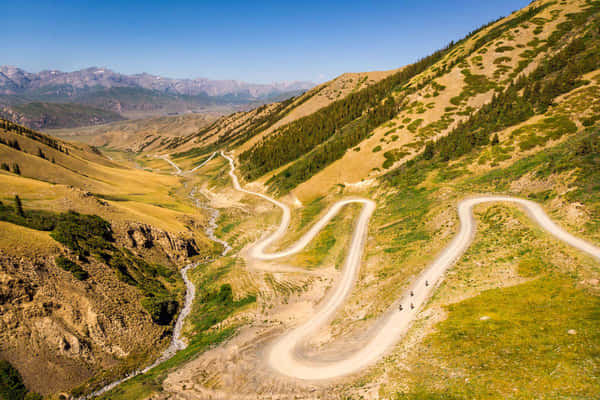The Mental and Physical Benefits of Pilgrimage Travel
There’s something about walking that allows the mind to breathe. Step after step, the body finds its rhythm, the noise of everyday life fades, and the path ahead becomes the only focus. It’s no wonder that for centuries, people have embarked on pilgrimage journeys, seeking meaning, healing, or simply the quiet that only long walks can provide.
Pilgrimage travel is unlike any other kind of journey. It’s not about ticking off landmarks or racing to a destination. It’s about the process itself—the slow unfolding of thought, the resilience tested with each mile, and the renewal that happens when you finally arrive. From the well-trodden paths of the Camino de Santiago to the sacred roads leading to Rome and Jerusalem, these journeys have transformed countless souls.
But what is it about walking these ancient routes that makes them so powerful? The answer lies in the way pilgrimage travel nurtures both the mind and body, offering reflection, resilience, and renewal in every step.
Walking as a Form of Reflection
There’s a reason people say they need to “walk things off.” There’s something about the steady rhythm of walking that encourages clarity. The mind, which often jumps between a thousand thoughts, begins to settle into the motion of the body. This is where the magic of pilgrimage begins.
Unlike the hurried pace of modern life—emails, deadlines, endless notifications—a pilgrimage forces you to slow down. The journey becomes as important as the destination. Whether walking alone or alongside fellow pilgrims, there’s a sense of space for deeper thoughts. Many travellers find that the simplicity of putting one foot in front of the other brings answers to questions they didn’t even realise they were asking.
Some start a pilgrimage searching for something—faith, healing, purpose—only to realise that what they truly needed was the space to listen to their own thoughts.
The Physical Benefits of Long-Distance Walking
It’s not just the mind that benefits from a pilgrimage. The body, too, is transformed. Long-distance walking is one of the most natural and effective forms of exercise, offering both immediate and long-term health benefits.
- Improves cardiovascular health – Walking for several hours a day strengthens the heart, lowers blood pressure, and improves circulation.
- Boosts mental well-being – Being in nature, away from screens and stress, reduces anxiety and releases endorphins.
- Enhances endurance and strength – Carrying a backpack, climbing hills, and pushing through tiredness builds both physical and mental stamina.
At first, the legs ache, the feet protest, and blisters make their inevitable appearance. But over time, the body adapts, strengthens, and thrives. There’s something deeply satisfying about realising that your body can carry you further than you ever thought possible.
Resilience Through the Journey
A pilgrimage is never just a leisurely walk. It comes with its fair share of challenges—long distances, unpredictable weather, fatigue, and the occasional moment of doubt.
The road might start with enthusiasm, but there will come a point where every muscle aches, the backpack feels heavier than it should, and the destination seems impossibly far away. This is the test. This is where resilience is built.
Every blister, every tired step, every hill climbed is a lesson in patience and perseverance. There are moments of frustration—perhaps when a wrong turn adds unexpected miles to the day. But there are also moments of triumph—when exhaustion turns into exhilaration upon reaching a resting point, or when a shared meal with fellow pilgrims reminds you why you started in the first place.
Pilgrimages strip away distractions. Without the usual comforts of home, without the ability to retreat into routine, you face yourself in a way that rarely happens in daily life. And through this, you learn what you’re capable of.
The Healing Power of Sacred Landscapes
It’s not just the walking that makes a pilgrimage profound. It’s also where you walk. There’s something deeply moving about tracing the paths walked by generations before—through ancient villages, over rolling hills, past crumbling chapels and towering cathedrals.
Whether it’s the rugged coastal stretches of the Camino or the quiet forests leading to Assisi, being surrounded by nature and history has an undeniable healing effect. The simplicity of the road—just you, the path, and the changing landscape—grounds you in the present moment.
Many pilgrims describe a sense of connection—to the past, to the land, to something greater than themselves. And in this connection, there is peace.
Renewal at the Destination
Arriving at a pilgrimage’s end is unlike arriving at any other destination. It is not just about reaching a place—it is about who you have become on the way there.
Standing in front of Santiago de Compostela’s cathedral, stepping through Rome’s Holy Doors, or arriving at the Church of the Holy Sepulchre in Jerusalem, the feeling is often overwhelming. It’s a mix of relief, gratitude, fulfilment, and transformation.
Some feel an immense spiritual connection, others simply a quiet sense of achievement. Many break down in tears, not out of exhaustion, but from the sheer magnitude of the journey’s impact.
And yet, the journey doesn’t really end there. Because something shifts after a pilgrimage. The sense of calm, strength, and perspective gained along the way stays with you. Life doesn’t suddenly become perfect, but you carry a new awareness, a deeper resilience, and a quieter kind of peace.
A Journey That Stays With You
A pilgrimage is never just about the final destination—it’s about the growth along the way. It’s about the miles that tested your strength, the silence that brought unexpected clarity, and the landscapes that held your thoughts as you walked.
Even after returning home, the lessons linger. The patience built through long days of walking, the ability to embrace discomfort, the understanding that some things take time—these stay with you long after the journey ends.
Whether walking for faith, healing, or personal discovery, the sacred walk offers something profound to every pilgrim. The road never leaves you quite the same as when you first set foot upon it.




